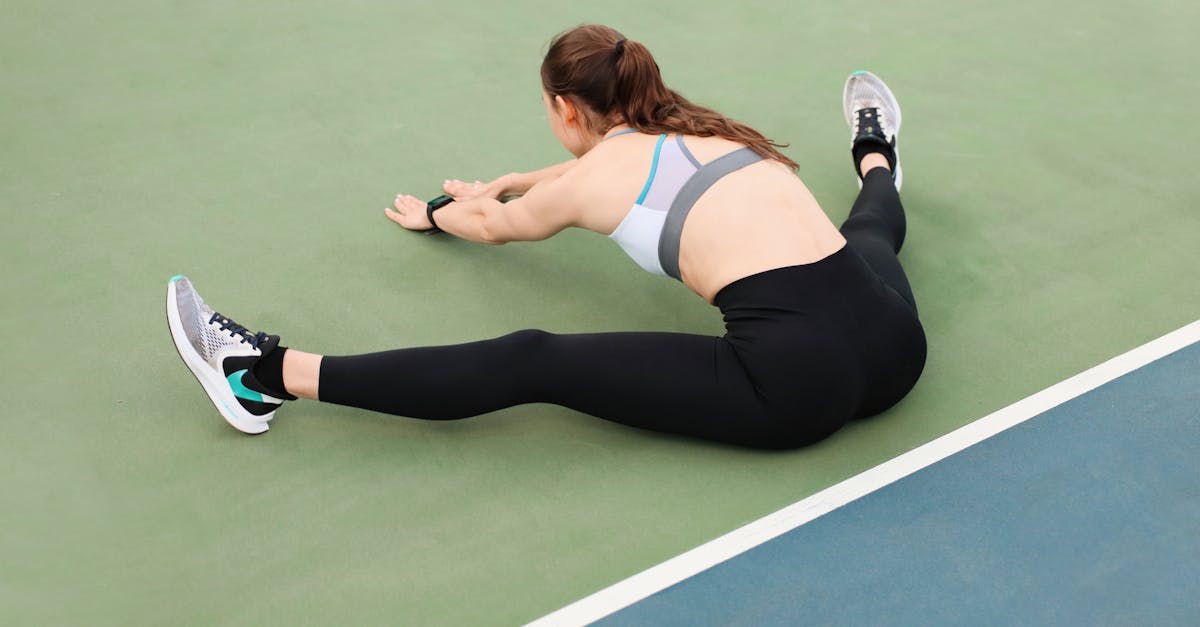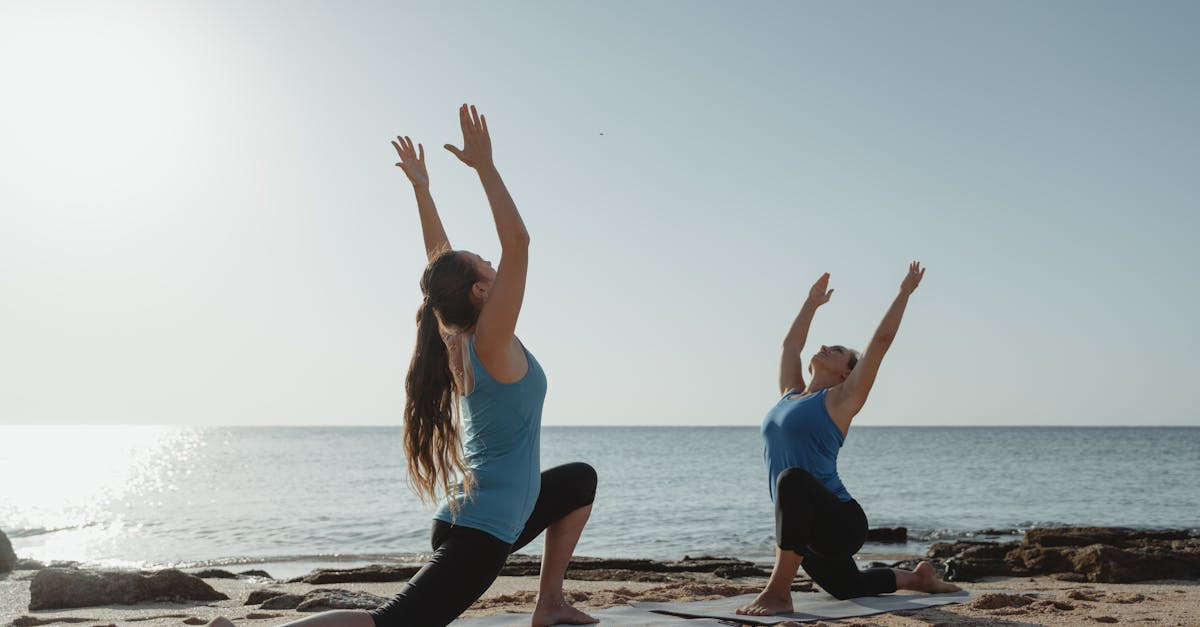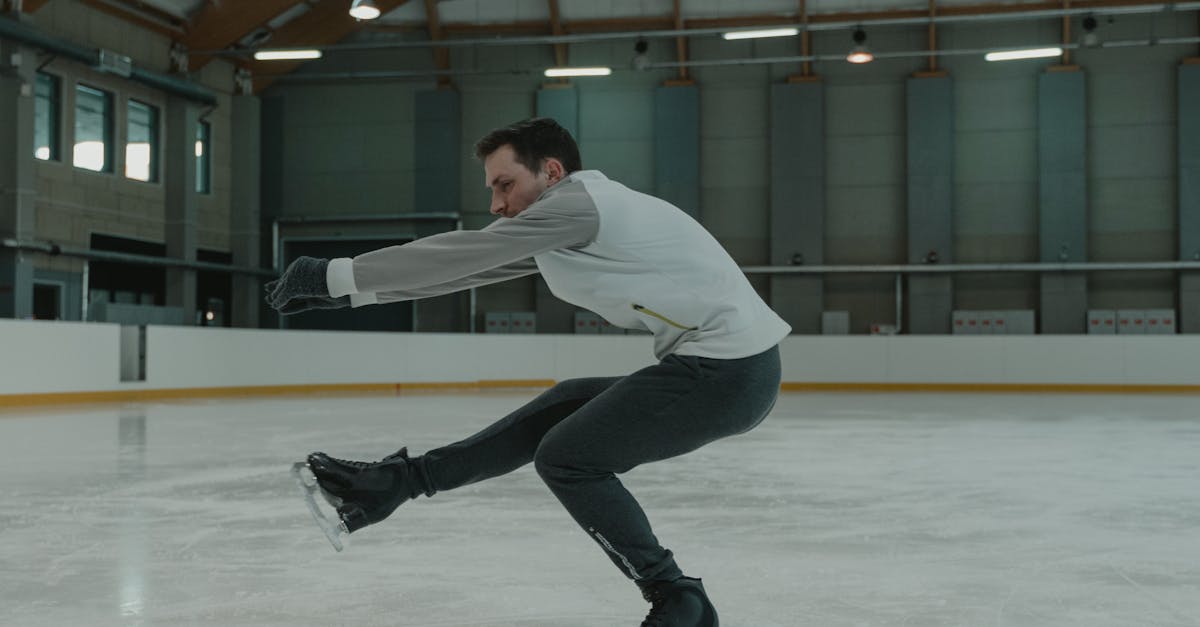Dizziness causing you discomfort? Discover how vertigo exercises can help!
In Short: Struggling with vertigo and looking for effective solutions? The article discusses five targeted vertigo exercises that can enhance your stability and improve your quality of life. These exercises are designed to mitigate symptoms associated with BPPV (benign paroxysmal positional vertigo) and other vestibular challenges. By incorporating these practices, you can experience greater balance and reduce feelings of dizziness, ultimately helping you regain confidence in your movements. Reclaim your health and wellness at Pulse Align Clinics; take advantage of our innovative and simple approach to postural recalibration. BOOK YOUR APPOINTMENT today!
Are you struggling with dizziness and balance problems?
Discover 5 Vertigo Exercises You Can Combine with Pulse Align for More Stability to effectively manage your vertigo symptoms. These targeted exercises not only address various dizziness causes such as BPPV (benign paroxysmal positional vertigo) and vestibular neuritis, but they also incorporate techniques for core strengthening and posture correction. Pulse Align’s innovative approach enhances the effectiveness of these vertigo treatment options, making it easier for individuals to regain stability and reduce dizziness with natural remedies for dizziness and nausea.

Finding a natural, effective way to enhance your well-being and restore posture improvement can seem challenging, especially when managing discomfort. Incorporating neuromuscular recalibration into your wellness routine can lead to improved stability and comfort. Here, we explore simple yet effective vertigo exercises that can be integrated with the innovative solutions offered by Pulse Align.
Understanding Neuromuscular Recalibration
Pulse Align is dedicated to helping clients achieve a renewed sense of balance through a gentle, technological approach that promotes muscle tone symmetry and overall well-being. Their unique methodology focuses on the body’s natural healing processes, providing gentle stimulation to facilitate optimal muscle function. Integrating exercises that specifically target balance and stability can enhance the results of your recalibration experience.
The Benefits of a Holistic Approach
Taking a holistic perspective on health allows you to harness the body’s innate ability to heal itself. Pulse Align’s focus aligns perfectly with the ethos of holistic health by encouraging practices that support natural balance. By performing recommended exercises at home, you can work towards a stronger core and better postural alignment, which are essential for long-term well-being.
Client Feedback
Many clients have shared how incorporating these exercises has enabled them to improve posture naturally and experience less discomfort. For example, individuals report feeling more stable and less unsteady after engaging in tailored exercises and treatments that complement their journey towards better health.
Take the Next Step: Book a Consultation
If you’re ready to embark on a journey toward enhanced stability and wellness, consider exploring the offerings of Pulse Align. Their services, which are suitable for the whole family, including children and pregnant women, can provide a supportive foundation for your wellness goals. Find a Pulse Align clinic near you in cities like Montreal, La Prairie, Terrebonne, and others!
Remember, Pulse Align complements your existing healthcare services, empowering you to take control of your well-being. Discover more about how Pulse Align can support your path to balance and stability by visiting their website and booking a consultation today!
- Epley Maneuver – A specific exercise for BPPV that aligns dizziness triggers.
- Brandt-Daroff Exercises – Helps diminish positional vertigo symptoms over time.
- Tai Chi – Promotes balance and control with slow, deliberate movements.
- Vestibular Rehabilitation Therapy (VRT) – A tailored approach that strengthens inner ear function.
- Core Strengthening Exercises – Enhances overall stability by strengthening abdominal muscles.

5 Vertigo Exercises to Combine with Pulse Align for More Stability
Managing vertigo and its accompanying symptoms effectively requires a multifaceted approach, especially when integrating strategies offered by Pulse Align. This article outlines five essential vertigo exercises that can enhance balance and stability, addressing common dizziness causes such as BPPV (benign paroxysmal positional vertigo), vestibular neuritis, and more. By adopting these exercises, individuals can promote a holistic recalibration of their body while enhancing neuromuscular health.
1. The Epley Maneuver
The Epley maneuver is a cornerstone in the treatment for BPPV. This exercise involves a series of head and body changes aimed at repositioning calcium particles in the inner ear that may cause dizziness. By practicing this maneuver, patients can effectively mitigate episodes of vertigo and relieve the associated distress. It’s advisable to perform this technique under the guidance of healthcare professionals at Pulse Align to ensure efficacy.
2. Balance Exercises
Engaging in targeted balance exercises can greatly improve stability. Simple movements, such as standing on one leg or using a balance board, can foster a better sense of equilibrium. These exercises focus on developing core strength and enhancing your body’s ability to maintain posture, which is vital for those experiencing balance problems.
3. Brandt-Daroff Exercises
The Brandt-Daroff exercises are another effective approach to managing vertigo. These can be done at home and involve transitioning between sitting and lying positions while turning the head. This exercise not only aids in reducing symptoms of BPPV, but also increases the body’s capacity to adapt to dizziness and improves overall body symmetry.
4. Tai Chi for Coordination
Tai Chi offers a holistic way to enhance balance through its gentle, flowing movements. This ancient practice promotes deep breathing while integrating slow, controlled motions that focus on coordination and posture correction. Practicing Tai Chi regularly can become an integral part of a lifestyle aimed at combating dizziness, especially for individuals experiencing conditions like Meniere’s disease or labyrinthitis.
5. Core Strengthening Exercises
Core strengthening plays a key role in supporting bodily stability. Exercises like planks and bridges improve trunk strength, aiding in balance problems associated with dizziness and injuries. By focusing on building core strength, individuals can significantly reduce the risk of falls and enhance overall wellbeing.
Integrating Exercises with Pulse Align
To get the most benefit from these vertigo exercises, consider integrating them into personalized plans at Pulse Align. The clinic provides tailored consultations to ensure each exercise aligns with individual health needs. This guidance helps address specific issues, such as dizziness after head injury or dizziness when standing up suddenly.
Call to Action
Ready to take control of your vertigo symptoms? Book a consultation at Pulse Align today to learn more about personalized exercise plans, shockwave therapy, and a holistic approach to achieving natural balance. Allow us to support your journey towards improved neuromuscular health and well-being!
| Exercise | Description |
| Epley Maneuver | Realigns displaced particles in the inner ear to alleviate BPPV symptoms. |
| Foster Maneuver | Aids in repositioning the otoconia and reduces dizziness with head movements. |
| Brandt-Daroff Exercises | Helps condition the brain to adapt to unwanted vestibular signals. |
| Tai Chi | Promotes balance and coordination through slow, controlled movements. |
| Vestibular Rehabilitation Therapy (VRT) | Customized program to address specific balance and dizziness challenges. |

Client Testimonials: Wellness Journey with Pulse Align
“Since starting my journey with Pulse Align, I have experienced significant improvements in my balance and overall well-being. The targeted exercises recommended, combined with the holistic approach, have helped my body naturally recalibrate. I am grateful for the support, especially as a resident of Châteauguay, where such services are invaluable for fostering health and wellness.” – Marie L.
“Living in Mont-Royal, I was struggling with dizzy spells that affected my daily life. After incorporating the vertigo exercises from Pulse Align into my routine, I noticed a remarkable difference. Their expertise, paired with my commitment to the exercises, has allowed me to regain my stability and enjoy life again.” – David T.
“The personalized care at Pulse Align has completely transformed my approach to managing vertigo. Based in Sainte-Marie, I appreciate how the exercises work in harmony with their unique methods to support my body’s natural healing process. I have seen such positive results that I feel empowered to tackle my wellness journey head-on.” – Isabelle G.
“As a resident of Chicoutimi, I can wholeheartedly recommend Pulse Align’s approach. The exercises they suggested have not only improved my symptoms but also enhanced my overall balance. It’s a relief to find a program that respects and nurtures the body’s ability to recover naturally.” – Paul A.
“In Deux-Montagnes, I sought out Pulse Align to help with my ongoing dizziness. The staff’s dedication to incorporating individualized exercises into my wellness routine has been a game changer. I feel more grounded and resilient every day, knowing that my recovery is supported by their holistic methods.” – Sarah K.
At Pulse Align, we work closely with healthcare teams to support clients and their families on their wellness journey. Local residents can find immense value in our tailored services for achieving a healthier, more balanced life. For more information and to explore our locations, please visit Our Clinics.
Understanding Positional Dizziness
Positional dizziness, particularly associated with conditions like benign paroxysmal positional vertigo (BPPV), can be effectively managed through specific exercises. Techniques such as the Epley maneuver, Foster maneuver, and Brandt-Daroff exercises serve as therapeutic interventions aimed at alleviating symptoms. These exercises focus on precise head positioning and movements to help realign displaced particles in the inner ear, facilitating relief from dizziness.
Tackling Vestibular Neuritis
Addressing vestibular neuritis discomfort is crucial for restoring stability and alleviating challenges related to dizziness. At Pulse Align, comprehensive approaches integrate targeted vertigo treatments with personalized vertigo exercises and an understanding of dizziness causes. The goal is to provide clear pathways to symptom relief and aid in regaining balance.
Vestibular Physical Therapy
Vestibular physical therapy exercises have been proven beneficial. These exercises improve stability, lessen dizziness, and enhance overall quality of life. They are designed to offer effective relief for individuals facing vertigo or other vestibular disorders. Throughout this process, healthcare professionals monitor progress and make necessary adjustments to optimize recovery.
Home-Based Vertigo Management
An exercise-based treatment program known as vestibular rehabilitation therapy (VRT) can significantly assist in managing vertigo. The exercises tailored for BPPV focus on small calcium carbonate crystals in the inner ear, addressing their dislodgement and repositioning.
Understanding BPPV Symptoms
BPPV, a prevalent inner-ear disorder, results in dizziness and vertigo due to dislocated calcium crystals affecting balance and spatial orientation. Common symptoms include dizziness, nausea, and unsteadiness. Although symptoms may self-resolve over time, home exercises such as the Epley maneuver can be performed to alleviate symptoms.
Our Mission
At Pulse Align, our mission is to deliver evidence-based, client-centered treatments that address the underlying causes of pain and dysfunction. By integrating advanced techniques and technologies, we strive to empower each person to take control of their health, ensuring a high standard of care, lasting relief, and an improved quality of life.
Learn more about this approach and available services at www.pulsealign.com and find a location near you here: https://pulsealign.com/our-locations/.
Transform Your Pain Management with TAGMED’s Neurovertebral Decompression Therapy
TAGMED’s advanced Spinal Decompression Therapy offers a non-surgical solution specifically designed to address moderate-to-severe disc issues. This innovative therapy gently reduces pressure on affected discs and nerves, enhancing mobility, alleviating pain, and supporting the body’s natural healing process. If you’ve reached a plateau with other therapies and are struggling with chronic pain or symptoms like a herniated disc or bulging disc, discover how TAGMED’s evidence-based decompression approach can help you resume an active, comfortable life.
Have you tried conventional treatments and still struggle with persistent back pain due to a severe disc condition?
Mechanism of Action
TAGMED’s neurovertebral decompression applies a controlled, progressive traction force to the spine. This method increases the space between vertebrae, significantly reducing pressure on intervertebral discs and nerve roots. As a result, better fluid circulation is promoted in the targeted area, which helps lower inflammation and relieve pain. This non-invasive approach offers a reliable solution for individuals with chronic back pain, sciatica, spinal stenosis, or other related conditions.
Specific Benefits
The effectiveness of TAGMED’s non-invasive treatment lies in its ability to alleviate chronic pain associated with conditions such as disc herniation and foraminal stenosis. By reducing pressure on nerve structures and optimizing fluid circulation around the discs, this therapy can enhance recovery, improve quality of life, and significantly reduce symptoms in a wide range of patients. This is particularly beneficial for those experiencing symptoms related to facet syndrome or degenerative disc disease.
Comparison with Other Treatments
Compared to traditional treatments like pain medications, corticosteroid injections, or surgery, TAGMED’s neurovertebral decompression technology offers distinct advantages. It avoids invasive interventions, minimizes medication-related risks, and presents a potentially faster path to recovery. This evidence-based alternative helps reduce dependency on pharmaceuticals, making it a compelling choice for individuals seeking safer, more effective pain management.
Case Studies or Testimonials
Numerous patients have shared their positive experiences with TAGMED’s spinal decompression therapy. Testimonials illustrate improvements such as lasting pain relief, quicker resumption of daily activities, and reduced reliance on medication. These firsthand accounts highlight the tangible results and practical benefits of this therapeutic approach, enhancing credibility and showcasing its value.
Enhance Your Stability with Pulse Align’s Supportive Approach
If you are navigating the challenges of dizziness, integrating the right exercises can significantly enhance your stability. Consider the following five vertigo exercises that work harmoniously with Pulse Align for more stability: Epley maneuver, Foster maneuver, Brandt-Daroff exercises, Tai Chi, and gentle yoga postures. These practices focus on natural pain relief and posture correction, supporting your body’s unique healing processes.
At Pulse Align, we prioritize a client-centric approach, ensuring every individual feels empowered and cared for. Our clients frequently share their positive experiences, highlighting improvements in posture, a reduction in discomfort, and enhanced mobility. The gentle, non-invasive techniques we utilize promote holistic health and encompass not just physical improvement, but an uplifted sense of overall well-being.
Are you ready to take the next step on your wellness journey? Schedule your consultation now and discover how the Pulse Align difference can transform your approach to health. Together, we can work towards restoring the balance your body seeks through our unique methods of neuromuscular recalibration.
Embrace the opportunity for a healthier, more balanced life. Let Pulse Align guide you toward wellness through its supportive and encouraging environment, where your body’s natural abilities are nurtured and celebrated.

Do you suffer from a chronic condition that responds little or not at all to conservative treatments?
Introducing Pulse Align, a non-invasive, innovative method designed to help restore the body’s natural balance and posture through gentle, imperceptible pulses. This approach aims to promote overall well-being by addressing muscle and joint tension, supporting clients in achieving a sense of stability and comfort without suggesting treatment for specific discomforts. At Pulse Align, we understand that enhancing your body’s natural recalibration process can make a remarkable difference in your life.
At the heart of Pulse Align’s philosophy is the belief that focusing on the body’s innate ability to help itself can lead to exceptional improvements in overall comfort and posture. Rather than addressing problems directly, our gentle methods encourage the body to naturally find its equilibrium. Clients often find themselves enjoying a new sense of well-being as they enhance their muscle symmetry and improve their postural awareness, contributing to a more balanced lifestyle.
Our personalized approach is a testament to our commitment to client-centric care. Many clients have shared their experiences of noticeable improvements in tension and discomfort in areas like the neck and back, as well as achieving better overall wellness, without relying on traditional treatment methods. This speaks volumes about the effectiveness of our services that prioritize the body’s natural processes over direct interventions. With a focus on enhancing overall balance, Pulse Align is dedicated to helping individuals from all walks of life cultivate a sense of peace and well-being.
We invite you to explore the Pulse Align website to learn more about our services, discover nearby locations such as La Prairie, Mont-Royal, Terrebonne, and more, and book a consultation for yourself or your family. Our approach is designed to complement your current wellness journey, ensuring you have the support you need from your healthcare team while integrating our unique methodologies into your routine. Pulse Align embraces every member of your family—our services are safe and suitable for children and even during pregnancy. Ensure your well-being today by booking your consultation with us online.
To learn more about our services and book an appointment, visit our website: Pulse Align.
Frequently Asked Questions
Vertigo
- Can medications relieve vertigo?Some medications (anti-vertigo or anti-nausea drugs) may help, but treating the underlying cause is essential.
- Can diabetes cause vertigo?Low blood sugar can cause dizziness, but that’s not true vertigo.
- Do gaze stabilization exercises help?Yes, in vestibular rehab, they help the brain adapt and compensate for sensory imbalances.
- Can vision problems cause vertigo?Blurry vision or unequal corrections can cause instability or a sense of imbalance.
- Do blood pressure medications cause vertigo?Some antihypertensives lower blood pressure, causing lightheadedness when standing up.
- Les médicaments peuvent-ils soulager les vertiges ?Certains médicaments (anti-vertigineux, antiémétiques) peuvent aider, mais c’est le traitement de la cause qui est essentiel.
- Do neck problems cause vertigo?Neck tension can contribute to instability, but true cervicogenic vertigo is less common.
- Do coffee or alcohol worsen vertigo?Excessive alcohol or caffeine may worsen vertigo symptoms in sensitive individuals.
- La maladie de Ménière, c’est quoi ?C’est une affection de l’oreille interne caractérisée par des crises de vertiges, des acouphènes et une perte auditive fluctuante.
- Should anti-vertigo drugs be taken long-term?They’re generally short-term. Long-term management should address the root cause.
Sophie Morel believes that knowledge is the most powerful step toward healing—and she’s here to illuminate the path forward for anyone facing the challenges of vertigo. At Pulse Align, Sophie not only highlights the latest breakthroughs in neuromodulation and non-invasive health technologies but also translates complex research into practical, everyday guidance. Her approach is grounded in empathy and fueled by a genuine drive to help readers find balance, both literally and figuratively. From exploring advanced treatments to sharing firsthand patient stories, Sophie’s heartfelt advocacy ensures that no one has to face the spinning world of vertigo alone.
Medical Disclaimer
The information and advice provided on this site do not replace the advice, diagnosis, or treatment of a healthcare professional. Please note that the author of this article is neither a doctor nor a specialist in a medical specialty as defined by the Collège des médecins du Québec. Manual medicine, functional medicine, and sports medicine as described on this site exclude any medical treatment or diagnosis made by a doctor or medical specialist. Always consult your doctor for any medical questions. For more details, please read our complete Legal Notice.
References
- Okada, M., Matsuto, T., Satoh, S., Igarashi, S., Baba, M., Sugita, O., & Okada, M. (1996). Role of pulse wave velocity for assessing autonomic nervous system activities in reference to heart rate variability. Medical Informatics, 21(1), 81–90. https://doi.org/10.3109/14639239609009013
- Jaradeh, S. S., & Prieto, T. E. (2003). Evaluation of the autonomic nervous system. Physical Medicine and Rehabilitation Clinics, 14(2), 287–305. https://www.pmr.theclinics.com/article/S1047-9651(02)00121-3/abstract
- ALSharif, D. S. (2021). An Examination of the Potential for Autonomic Nervous System Responses and Postural Sway to Serve as Indicators of Visual-Vestibular Mismatch. Temple University. https://search.proquest.com/openview/8f9dec4952045e09ec36542185cffc12/1?pq-origsite=gscholar&cbl=18750&diss=y
- Bracher, E. S., Almeida, C. I., Almeida, R. R., Duprat, A. C., & Bracher, C. B. (2000). A combined approach for the treatment of cervical vertigo. Journal of Manipulative and Physiological Therapeutics, 23(2), 96–100. https://www.sciencedirect.com/science/article/pii/S0161475400900745
- Guerra, J., & Cacabelos, R. (2019). Pharmacoepigenetics of vertigo and related vestibular syndromes. In Pharmacoepigenetics (pp. 755–779). Elsevier. https://www.sciencedirect.com/science/article/pii/B9780128139394000280
- Li, Y., Yang, L., Dai, C., & Peng, B. (2022). Proprioceptive cervicogenic dizziness: a narrative review of pathogenesis, diagnosis, and treatment. Journal of Clinical Medicine, 11(21), 6293. https://www.mdpi.com/2077-0383/11/21/6293
- Grubb, B. P. (1999). Pathophysiology and differential diagnosis of neurocardiogenic syncope. The American Journal of Cardiology, 84(8), 3–9. https://www.sciencedirect.com/science/article/pii/S0002914999006918
- Collet, C., Vernet-Maury, E., Miniconi, P., Chanel, J., & Dittmar, A. (2000). Autonomic nervous system activity associated with postural disturbances in patients with perilymphatic fistula: sympathetic or vagal origin? Brain Research Bulletin, 53(1), 33–43. https://www.sciencedirect.com/science/article/pii/S0361923000003063
- Nanda, A., & Tinetti, M. E. (2003). Chronic Dizziness and Vertigo. In Geriatric Medicine (pp. 995–1008). Springer-Verlag. https://doi.org/10.1007/0-387-22621-4_68
- (20+) Facebook. (n.d.). Retrieved December 19, 2024, from https://www.facebook.com/



